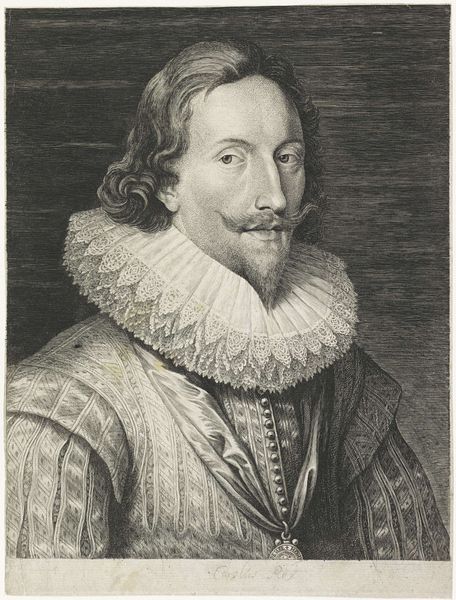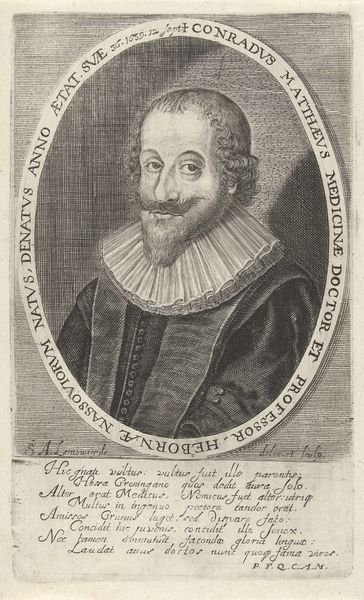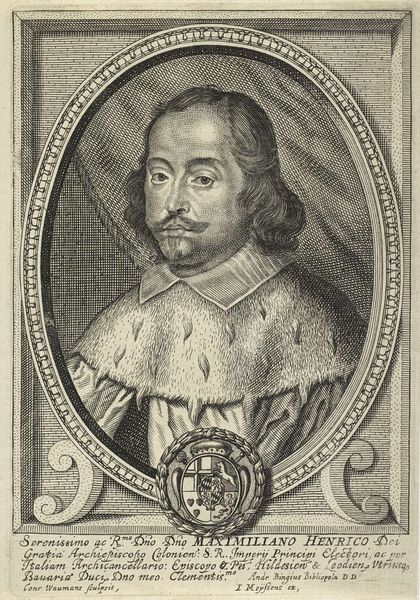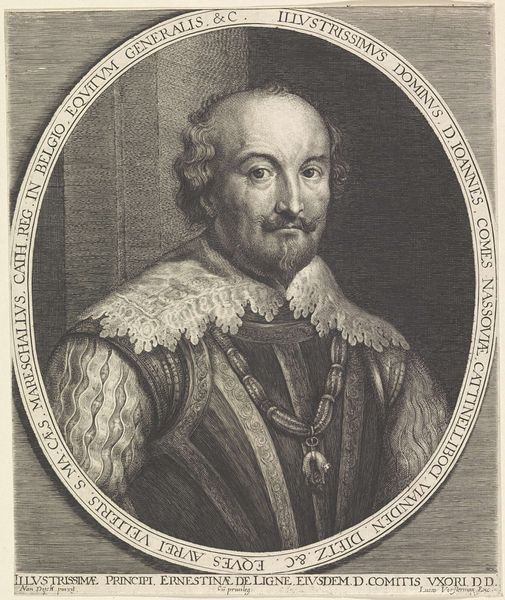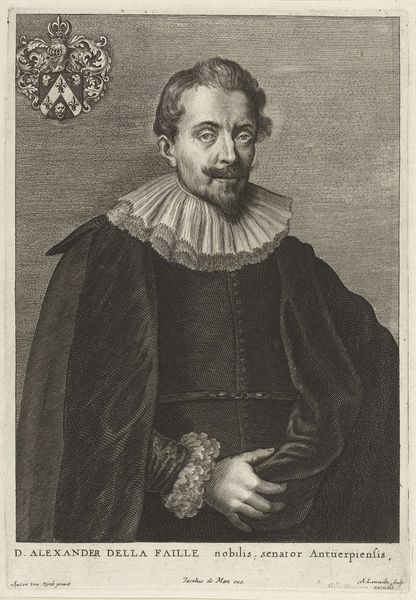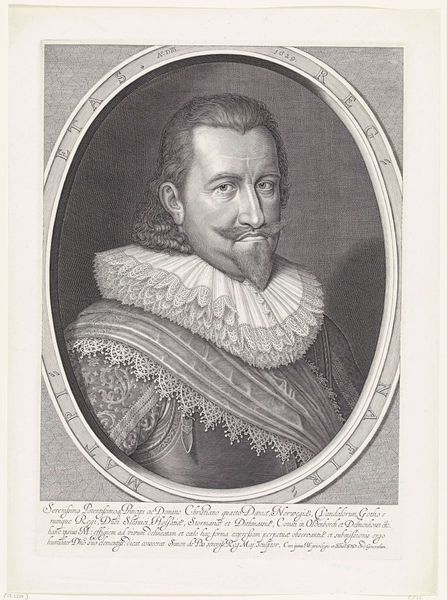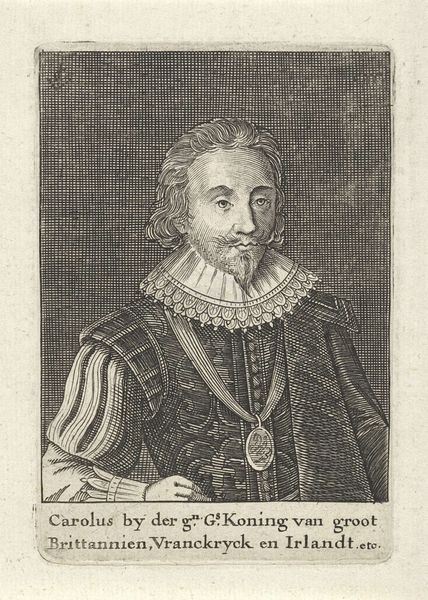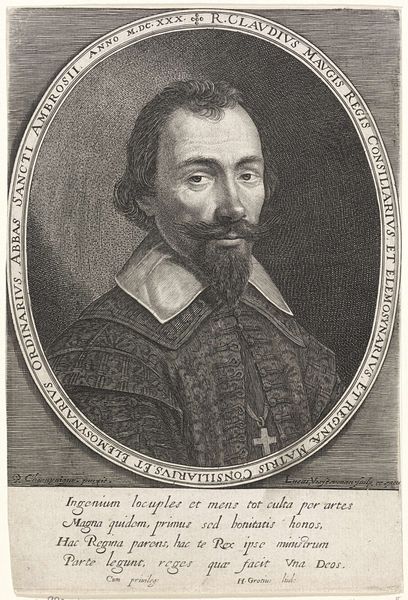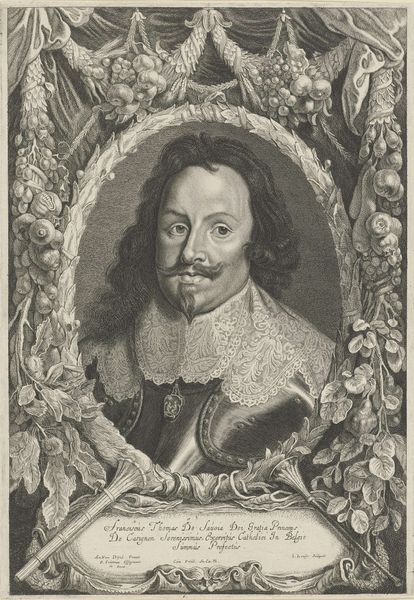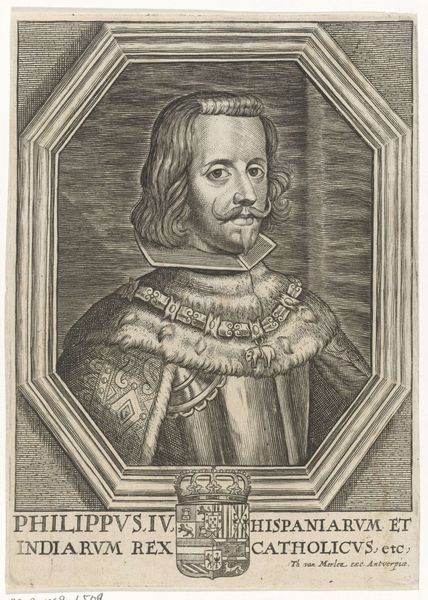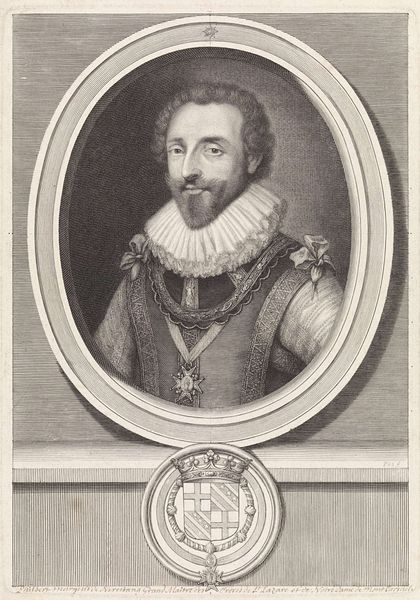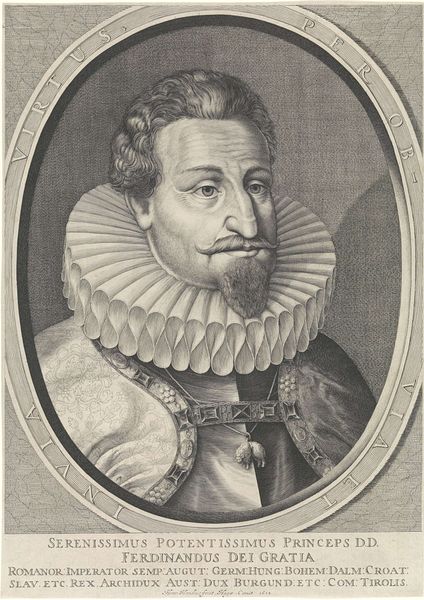
engraving
#
portrait
#
baroque
#
old engraving style
#
caricature
#
portrait reference
#
engraving
#
portrait art
Dimensions: height 423 mm, width 306 mm
Copyright: Rijks Museum: Open Domain
This portrait of Willem Herbert, the 3rd Earl of Pembroke, was made by Lucas Vorsterman I, a Flemish printmaker. Vorsterman used engraving to create this image. Engraving is an intaglio process where the artist uses a tool called a burin to carve lines into a metal plate, usually copper. The depth and spacing of these lines determine the amount of ink they hold, and thus the darkness of the printed mark. Vorsterman skillfully manipulated this process to capture the Earl's likeness and the texture of his clothing and lace collar. Prints like this were essential for disseminating images and information in the early modern period. They were relatively affordable and could be reproduced in large quantities, making them a powerful tool for shaping public perception. Here, the very labor-intensive technique of engraving speaks to the Earl's status and the desire to project an image of refinement and power. By understanding the material and process behind this print, we gain a deeper appreciation for its cultural significance. It's not just a portrait; it's a testament to the skilled labor of the artist and the social forces that shaped its creation.
Comments
No comments
Be the first to comment and join the conversation on the ultimate creative platform.
